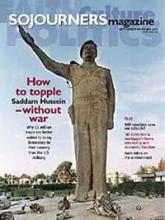The gospels all agree on two dimensions of Jesus' ministry: He proclaimed the reign of God, and he was known as a healer. We often refer to the healings he performed as "miracles." But "miracle," in the sense of an instance where natural laws are transcended, is a modern notion. Our questions to these accounts of healings often begin with skepticism that anything "really" happened. We then ask about the diagnosis and treatment by which the cure was effected. Did the blindness or paralysis have a physical cause or a psychological one? Was the apparent healing simply the result of a placebo effect in which the encounter did what was anticipated?
Ancient communities did not share our assumptions about natural laws and cause and effect and took for granted that the described transformation did occur. They asked only under whose power healing took place (Mark 3:21-27) and what other meanings it conveyed. Jesus' work of healing touched many dimensions of his life, ministry, and identity as God's Anointed One: the coming of the reign of God with its message of "good news to the poor," people's struggle to walk in covenant with God, and the meaning of "faith" itself. In short, Jesus' healing works involve divine power expressed on behalf of justice and wholeness and, ultimately, a life so authentic that death itself cannot end it.
Read the Full Article

